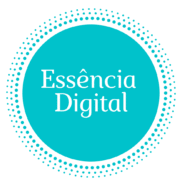In a traditional office, the tools for work are all around you: physical meeting rooms, whiteboards for brainstorming, and filing cabinets for documents. In the world of remote work, your office is digital, and constructing the right “tech stack” is one of the most critical factors in creating a productive, collaborative, and secure virtual environment.
Choosing the right remote work tools is about more than just convenience; it’s a strategic decision that impacts your team’s efficiency, communication clarity, and overall success. A well-designed digital toolkit can eliminate friction, foster connection, and empower you to do your best work, no matter where you are.
This guide explores the essential categories of remote work tools and highlights top contenders in each to help you build your own powerful digital headquarters.
The Digital Lifeline: Communication Platforms
Clear, reliable communication is the absolute bedrock of any successful remote team. These tools serve as your virtual hallways, meeting rooms, and water coolers, keeping everyone connected and aligned. A great remote communication strategy balances both real-time (synchronous) and delayed (asynchronous) channels.
- Slack: A powerhouse of synchronous communication, Slack excels at creating a vibrant, fast-paced chat culture. Its real strength lies in its organized channels (for projects, teams, or topics) and its vast library of integrations with other apps, allowing you to centralize notifications and workflows.
Best for: Tech-savvy teams that thrive on instant messaging and want to build a deeply integrated digital ecosystem. - Microsoft Teams: More than just a chat app, Teams is a holistic collaboration hub. It tightly integrates chat, video meetings, file storage, and the full suite of Office 365 apps (Word, Excel, etc.).
Best for: Organizations already embedded in the Microsoft ecosystem that want an all-in-one solution for communication and document collaboration. - Zoom: The gold standard for video conferencing, Zoom is known for its stability, reliability, and high-quality video, even with lower bandwidth. It’s the essential tool for client-facing meetings, webinars, and any conversation where clarity and professionalism are paramount.
Best for: Anyone who needs rock-solid video communication for important external or internal meetings.
The Single Source of Truth: Project Management Hubs
The primary goal of a project management tool is to create a “single source of truth” that definitively answers the questions: “Who is doing what, and by when?” This eliminates confusion, reduces the need for constant status-update meetings, and provides clear visibility into a project’s progress.
- Trello: Celebrated for its simplicity and visual appeal, Trello uses a Kanban-style system of boards, lists, and cards. You can see your entire workflow at a glance and easily drag and drop tasks from “To Do” to “In Progress” to “Done.”
Best for: Individuals and small teams who prefer a highly visual, intuitive way to manage straightforward projects. - Asana: For more complex projects, Asana offers a robust set of features, including list, board, calendar, and timeline views. Its ability to manage task dependencies (where one task cannot start until another is finished) is critical for intricate workflows.
Best for: Teams managing multi-stage projects that require detailed planning and tracking of interconnected tasks. - Monday.com: A highly flexible and customizable “Work OS” (Work Operating System). Monday.com can be adapted to fit almost any need, from a simple task tracker to a complex CRM or marketing campaign manager, thanks to its colorful interface and powerful automation capabilities.
Best for: Teams that need a versatile, all-in-one platform that can be tailored to their unique processes.
The Virtual Filing Cabinet & Whiteboard: File Sharing and Co-Creation Tools
This category solves two key remote challenges: having a centralized, accessible place to store files, and being able to work on those files together in real time.
- Google Workspace (formerly G Suite): The undisputed king of real-time collaboration. Google Docs, Sheets, and Slides allow multiple people to edit a document simultaneously, see each other’s changes instantly, and leave comments. Paired with Google Drive for storage, it’s an essential part of most remote tech stacks.
Best for: Teams that need to co-create documents, spreadsheets, and presentations seamlessly. - Notion: More than just a note-taking app, Notion is a powerful all-in-one workspace. It allows you to build a centralized “second brain” or internal wiki for your team, combining documents, databases, and project management in one flexible, interconnected tool.
Best for: Teams wanting to organize knowledge, document processes, and manage projects in a single, highly customizable environment.
Fortifying Your Digital Office: Essential Security Tools
In a remote setting, every team member is their own IT department. Security is not an afterthought; it is a fundamental responsibility to protect company and client data.
- VPN (Virtual Private Network): When you work from coffee shops, airports, or co-working spaces, you’re often using public Wi-Fi, which can be insecure. A VPN (like NordVPN or ExpressVPN) encrypts your internet connection, creating a private, secure tunnel for your data.
- Password Manager: Reusing passwords across multiple services is one of the biggest security risks. A password manager (like LastPass or 1Password) securely stores all your complex, unique passwords and can automatically fill them in, meaning you only have to remember one master password.
- Two-Factor Authentication (2FA): This adds a critical second layer of security to your accounts. After entering your password, you must provide a second piece of verification (usually a code from your phone), making it significantly harder for unauthorized users to gain access. Enable it on all important accounts.
Conclusion: Build a System, Not Just a Collection of Tools
The most effective remote workers don’t just have a collection of apps; they have a thoughtfully constructed digital ecosystem where each tool has a clear purpose. The goal is to build a seamless system that reduces friction, enhances communication, and allows you to dedicate your precious time and energy to high-value work.
Don’t be afraid to experiment to find what works best for you and your team. By investing in the right digital toolkit, you empower yourself to be just as productive, collaborative, and secure as you would be in any physical office.

